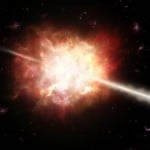Looking for a fun and “tasty” class? Want to impress your significant other? Enroll in PH 4999 (3 credits), “What’s Cooking? A Physicist in the Kitchen.” The class will be available in spring 2013.
Apart from cooking and tasting delicious food, you will learn quantum physics, thermodynamics, fluid dynamics and even laser spectroscopy.
For more information, contact Professor Jacek Borysow.
